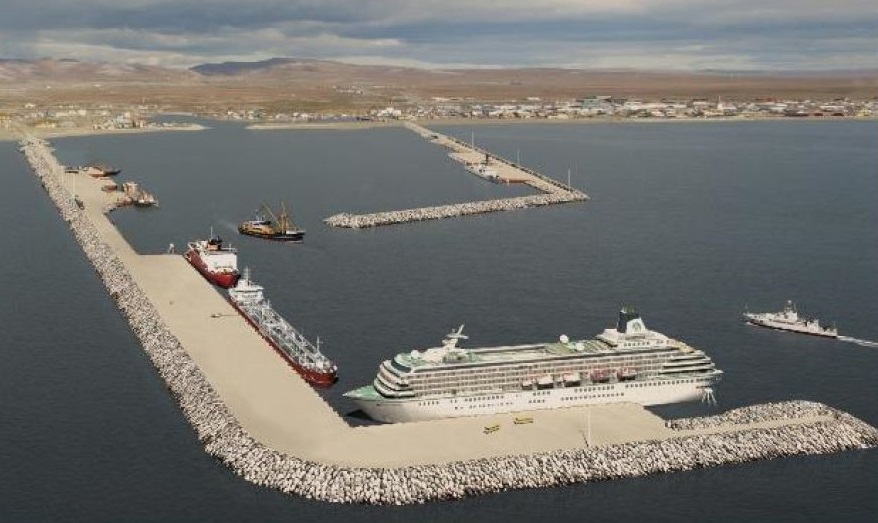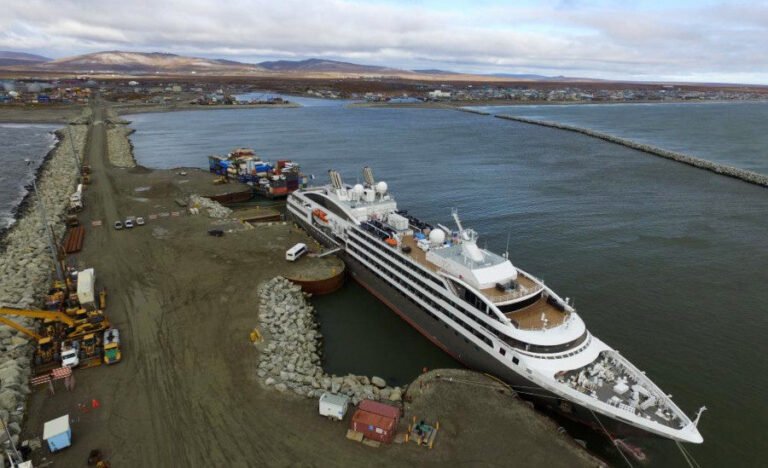The Port of Nome will provide the nation’s first deep-water Arctic port under an agreement between the U.S. Army Corps of Engineers’ Alaska District and the City of Nome, which owns and port operation, also known as the Port of Nome.
The $548 million project, with 90 percent paid for by the federal government and the remaining 10 percent by the city, will rebuild the harbor to handle more ships at any given time and increase its harbor depth from 22 feet to 40 feet. — sufficient to adequately accommodate a wide range of vessels for trade, tourism and national security.
Corps officials expect to award a construction contract later this year.
“As sea ice retreats and maritime traffic increases in the Arctic, Nome is at the center of an evolving world,” Col. Jeffrey Palazzini, the corps’ district commander, said in a statement. “A more efficient transportation hub in the form of this port expansion will create opportunities to improve housing, food security and infrastructure by strengthening the region’s supply chain.”
The project collaboration agreement signed on January 25 is a key part of the federal process needed to proceed. It describes the project and the responsibilities of the federal government and the non-federal sponsor, which is the City of Nome, in sharing costs and carrying out the work.
The main objective of the three-phase project will be to expand the outer basin of Nome Harbor while creating a new deep-water basin, a first in the Arctic for the United States. Dredging will deepen and maintain deep and outer water basins and associated navigation channels.
Serving as a regional center located in the center of Alaska’s west coast, the Port of Nome was established in 1917 on the Seward Peninsula adjacent to Norton Sound. It is 545 miles northwest of Anchorage and has no access to Alaska’s major highway systems. Government officials believe that Nome, with a population of 3,500, is of critical importance to the viability of surrounding communities. The port also provides a launch point for ships heading to the Bering Strait shipping lanes.
New construction at the harbor will extend the west causeway by more than 3,400 feet and build a new east causeway aligned with F Street, creating about 2,000 feet of usable dock moorage and a series of 400-foot docks attached to the causeways.
 Photo illustration courtesy of the US Army Corps of Engineers
Photo illustration courtesy of the US Army Corps of EngineersDepending on the size of the ships in the port, the expansion will double or triple the number of ships capable of docking at one time. The 40-foot deep water basin allows the port to accommodate large cruise ships, cargo ships and all U.S. military vessels smaller than an aircraft carrier.
The pre-construction, engineering, design and first construction phase is now funded at $250 million, allowing the project to move toward the award of a construction contract in 2024. The total project cost is 548 million dollars. The recommended navigation improvement plan was first approved by the USACE in May 2020, and was then estimated at $491 million.
Sen. . Rep. Dan Sullivan (R-Alaska) said in a statement. “This announcement is a milestone for the project.”
Nome Mayor John Handeland says the U.S. has long needed a deep-water port to enable refueling and refueling services for the national security fleet operating in the Arctic. “The expanded port will improve support in the transportation of critical goods and fuels throughout the region,” he adds.
The port upgrade is part of a U.S. national security focus on Alaska, which also includes an ongoing runway extension project at Joint Base Elmendorf-Richardson north of Anchorage to accommodate larger aircraft and a more frequent use, “as the need for economic stability and national security.” in the Arctic it’s becoming more and more important,” says Corps District Chief Palazzini.

